by Abigail Watson-Popescu
As a child growing up in Titusville the first thing you are taught about your hometown is that Edwin Drake struck oil here on August 27, 1859. The thing you notice, though, is that your town feels very different from other towns. With wrought iron fences lining slate sidewalks, horse hitching posts and carriage mounting blocks dotting the streets, and gigantic Victorian houses abounding there is a feeling of actually living in another time.
As the birthplace of the modern petroleum industry, Titusville is one of the most historically significant towns in Western Pennsylvania. Architecturally, the town displays a remarkable compendium of popular nineteenth century American styles such as Italianate, Gothic Revival, Queen Anne, and Colonial Revival.
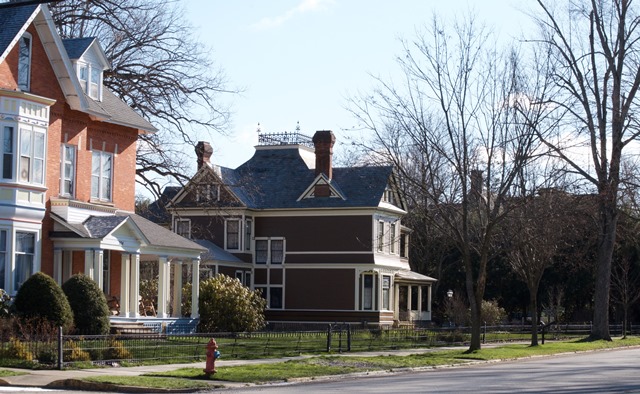
Victorian Homes on Main Street, Titusville, Crawford County, 2016. Photo courtesy of Abigail Watson-Popescu.
Although the oil boom petered out in the 1870s, Titusville successfully stabilized itself economically by developing other industry related to the producing, transporting, and selling of oil. The wealth that came about from petroleum related industries resulted in the construction of a great many incredible Victorian commercial and residential buildings. Early on, Titusville residents had a vision for this idyllic rural town. They yearned for community permanence and were optimistic that the town had moved beyond the boom/bust cycle, which resulted in a more orderly approach to town planning. As Brian Black’s fine book, Petrolia: The Landscape of America’s First Oil Boom points out, the residents of Titusville, tired of the raucous troubles associated with boomtown life, established “community committees” to control the planning and development aspects of the town in 1865 after a national cholera epidemic.[1] Titusville was designed to be the ideal nineteenth century streetscape that we see today: flat and walk-able, with wide tree lined streets forming a grid, dotted with several beautiful green parks. There is an orderly flow between the shaded, peaceful residential Main Street and the commercial and industrial sections beyond. The Victorian plan of the town continues to shape the way we live and move about today.
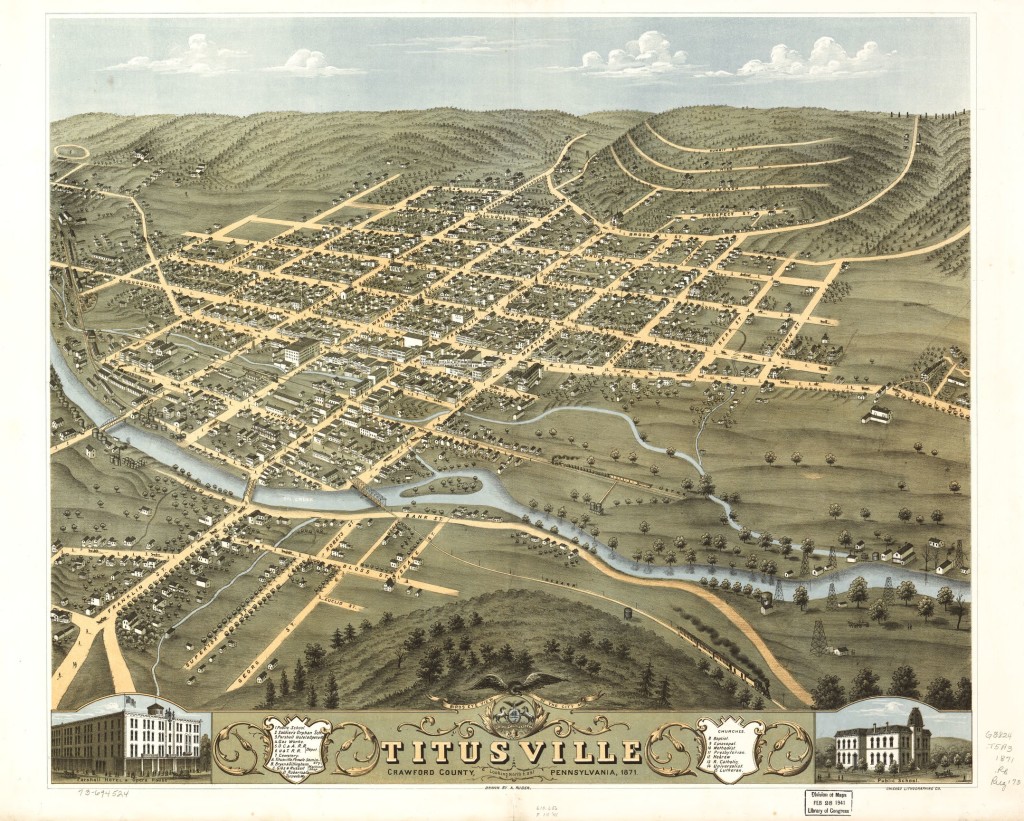
Birds eye view of the city of Titusville, Crawford County, Pennsylvania 1871. Courtesy of the Library of Congress. Ruger, A. Chicago Lithographing Co. (Chicago) Chicago Lithographing Co. (1871) https://lccn.loc.gov/73694524
While the inhabitants of Titusville after the oil boom placed the town on a path of order and stability with regards to city planning, the intervening years have not been necessarily kind to the Victorian intentions. Over the course of the twentieth century, with the tumultuous ups and downs of the manufacturing sector typical of any rust belt city or town, Titusville was unable to maintain several of the grand Victorian buildings that made it so remarkable. There have been great losses, not all in the distant past: The Citizens Bank Flatiron-style building demolished in 1966 to build a strip mall (according to the Titusville Herald), The Colonel Drake Hotel, which was sold and torn down in 1998 to make way for a CVS Pharmacy, and The Odd Fellows Building in 2009, an anchor building on a corner torn down to make way for a parking lot.[2]
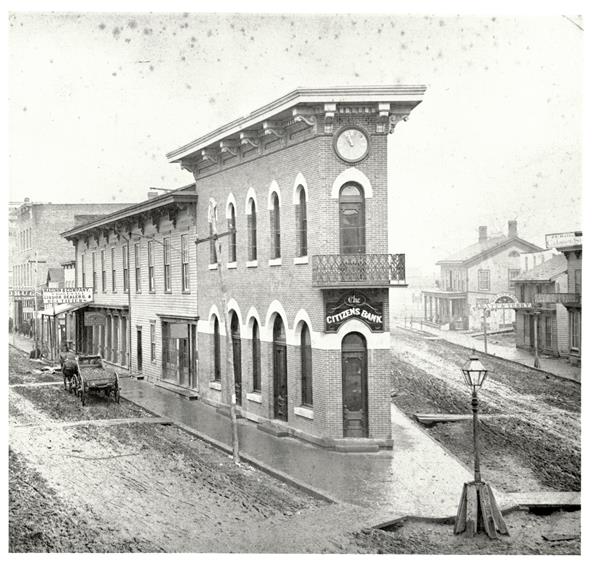
Citizens Bank (Flatiron Building), Spring & Diamond Streets, Titusville, Crawford County, 1873.
Courtesy of PHMC, Drake Well Museum, Titusville, PA
Some destruction has not been intentional, however. Most significantly, on March 18, 2015 Titusville very nearly lost its most important historic commercial building to fire. Built in 1877, the Towne Square Building, historically known as the Chase and Stewart Block, is now owned by the Titusville Redevelopment Authority. Home to Titusville’s popular Blue Canoe Brewery, the building became engulfed in flames when a fire in an adjoining building reignited. This was a truly unfortunate turn of events, as the Redevelopment Authority had just wrapped up a successful multi-year rehabilitation project of the building. The building sustained nearly 2 million gallons of water, smoke damage, as well as the loss of the entire fourth floor (including a mansard-style shingled parapet with window detailing). Yet, the Redevelopment Authority decided to rehabilitate, once again, this important historic building that had served as the hub of the community.[3] After standing helplessly on the sidewalk watching fire engulf their beloved downtown building, Titusville’s citizens came out in droves to vocally and financially support the effort to rehabilitate Towne Square. As of this writing, The Blue Canoe Brewery has opened for business to the delight of its many fans far and wide!
The fire ignited a sense of urgency among Titusville’s citizens about how vulnerable the remaining historic architecture is, and has spurred an effort to take the steps towards historic preservation that have eluded the town for so many years. The City of Titusville has a large historic district that was listed on the National Register in 1985. The Titusville Planning Commission has spent many years attempting to identify how best to deal with the historic overlay district that exists on the zoning map, yet holds no legal protections. After many years of investigation, the Planning Commission recommended that City Council decide the next step towards preserving our historic district. With discussion playing out in the town newspaper and at City Council meetings, there was something of a sea change among town residents. Many people came out to vocalize their support for the preservation of Titusville’s historic buildings. Indeed, the Council did vote 4-1 to apply for a Keystone Historic Preservation Grant to procure design guidelines. It is the hopes of lifelong residents and preservationists like myself that the design guideline process will result in a lot of public input and feedback on the best way forward to protect the historical structures that make up our town—one that is truly a unique snapshot of a momentous era of American industrial history.
[1] Black, Brian, Petrolia: The Landscape of America’s First Oil Boom. (Baltimore: The Johns Hopkins University Press, 2000), 132-133.
[2] Weber, David. Photo Captions. The Titusville Herald, June 14, 2007.
[3] http://www.tcda.org/townesquare.php
The author of today’s post is Abigail Watson-Popescu. Here is a little bit about her…
While my higher education background is in English Literature, I was introduced to historic preservation eight years ago as a volunteer for the Oil Region Alliance’s Ida Tarbell House restoration project. In the time since, I have acquired an AAS degree in Building Preservation/Restoration from Belmont College in St. Clairsville, OH. I am a member of the Titusville Planning Commission, a group of five individuals appointed by City Council to address and make recommendations on various planning matters in the town.
Comment Policy
PHMC welcomes and encourages topic-related comments on this blog. PHMC reserves the right to remove comments that in PHMC’s discretion do not follow participation guidelines.
Commenters and Comments shall be related to the blog post topic and respectful of others who use this site.
Commenters and Comments shall not: use language that is offensive, inflammatory or provocative (this includes, but is not limited to, using profanity, obscene, or vulgar comments); disparage other commenters or people; condone illegal activity; identify the location of known or suspected archeological sites; post personal information in comments such as addresses, phone numbers, e-mail addresses or other contact details, which may relate to you or other individuals; impersonate or falsely claim to represent a person or an organization; make any commercial endorsement or promotion of any product, service or publication.
If you would like to comment on other topics not related to this blog post but related to PHMC, please fill out the PHMC Contact Us Form.
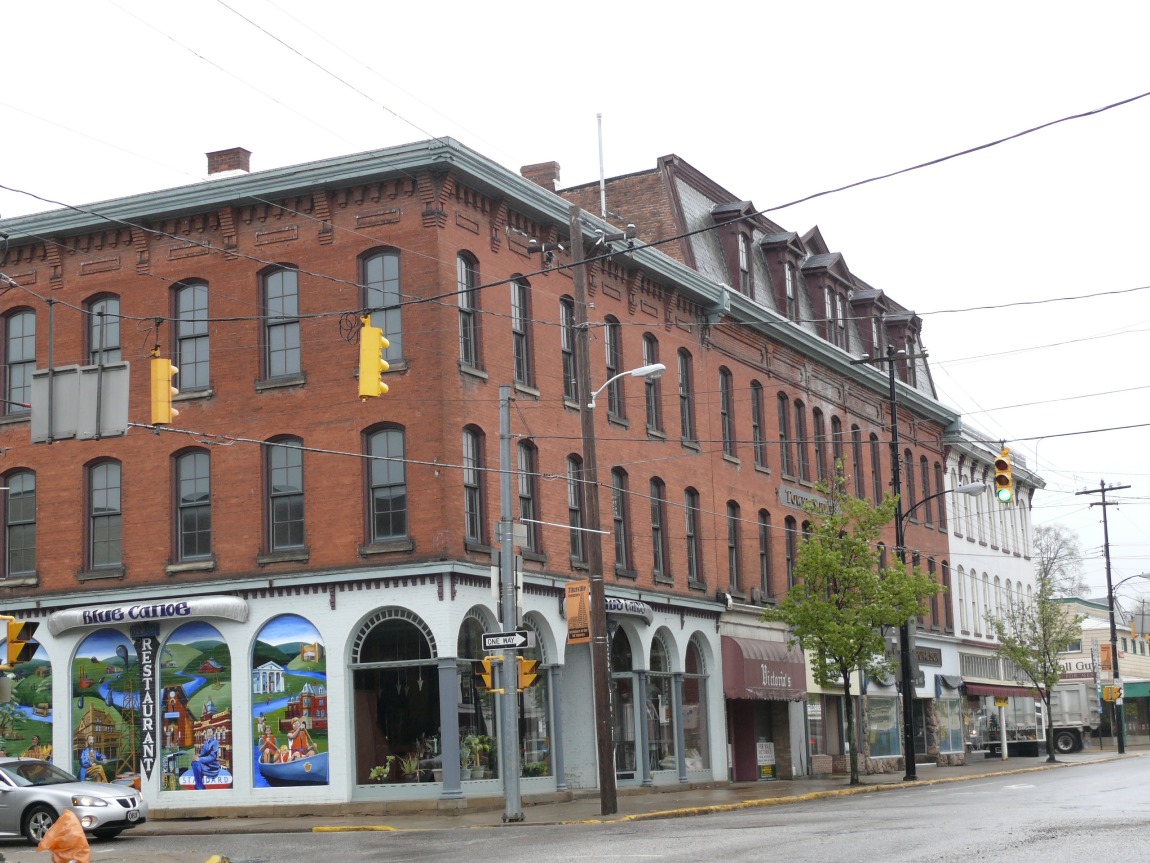
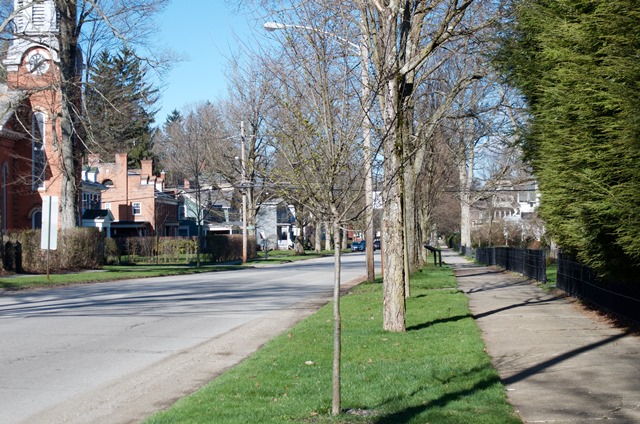
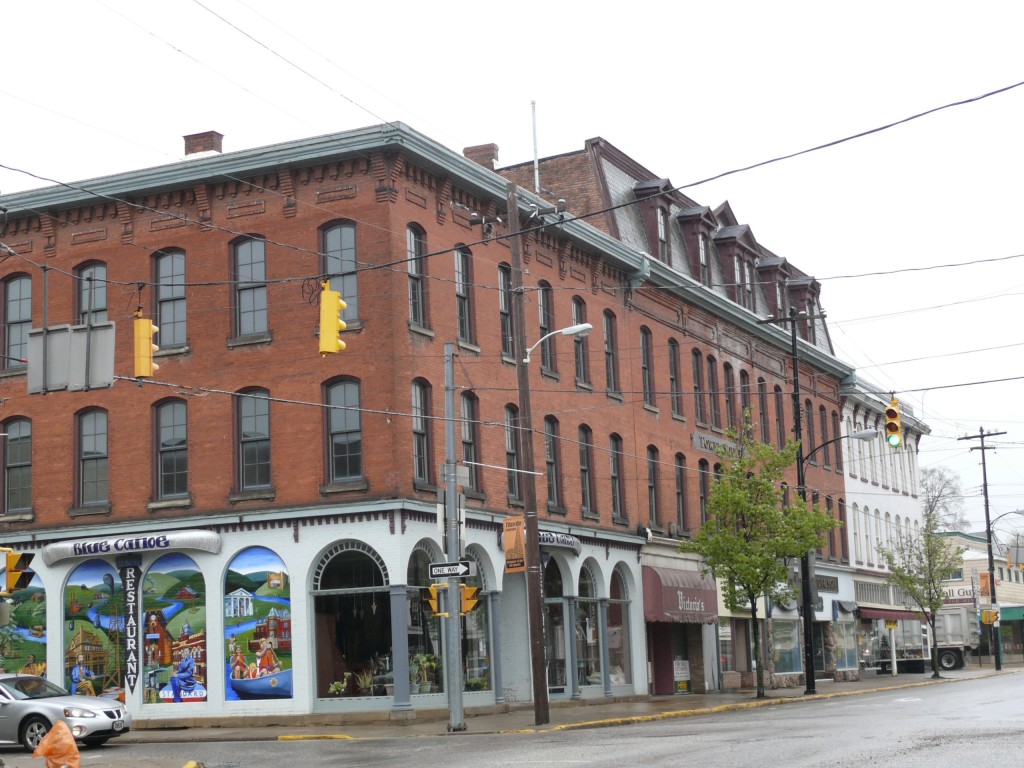
A very nice read on my 65th birthday! Well written; exceptional style, grammar, punctuation, and usage. We must all realize the great sacrifices that were bestowed upon us by the pioneers, family, and the many strangers that helped settled Titusville, Pennsylvania. A very proud, and authentic locale.
What a great article. Interesting background on Titusville’s architecture & planning. So glad the commitment to preservation continues despite the recent losses.
Hello! Really enjoyed this post!
This message is for Abigail Watson-Popescu:
My name is Dana Gibson, I grew up in the Ida Tarbell house. My late mother, Barbra Gibson, lived in the Tarbell house until the mid 2000’s. Unfortunately, I moved to California & haven’t been back to Titusville since the house was purchased by the Oil Region Alliance.
I loved this house so much! I was thrilled to move there as a child and had such a joyful time restoring the house from room to room. I was a bit of a “parent pleaser”, so with the afternoon by myself, thinking my dad would be impressed if I “cleaned” the wall in the big, formal dining room. I clearly remember putting a wet sponge on the wall in the dining room- then quickly realizing it was now “a situation”-creating one Big Clean spot that really couldn’t be hidden with a frame.
My dad just turned to me and said, “well, I guess we’ll put up some wallpaper on that wall”. I learned pretty quickly how very old everything in that house was- what it felt like to be in a Victorian house- some clothes, full suitcases, even confederate money was left in the house when we bought it after the estate sale from the Green family.
My dad was 48 (a D-day Veteran) when he had me, so he always seemed from another time- bonding with him while doing our best to restore the house meant the world to me. The old attic was filled with turn of the century newspapers..I remember thinking, “when everything costs a penny, can you imagine what you could get for a dollar?!” I was 12 and the history of the house kept me entertained through my teenage years at THS. My dad passed in 1990, and I was able to visit throughout the decade with my mom – she sadly passed in 2009- lots of love & laughter in that house! I feel so lucky to have had that time in that place, with my beloved mom & dad.
Needless to say, I Greatly look forward to seeing the restoration…I will always have wonderful memories of Main St.
I’d love to see any pictures, hear any stories of things you might have discovered when you helped to once again, bring back the Ida Tarbell house.
Stay safe, all the best, Dana Gibson
-feel free to pass my email along to anyone involved in the restoration!